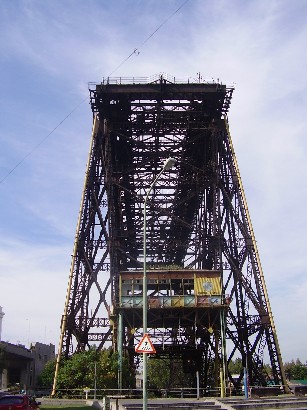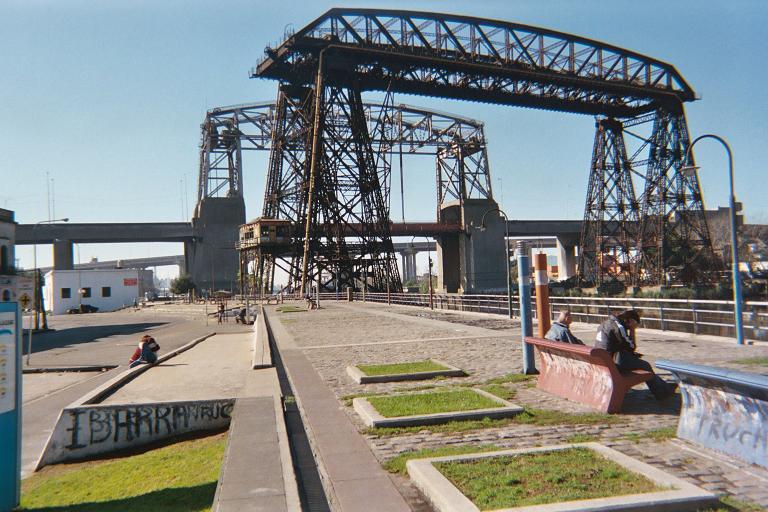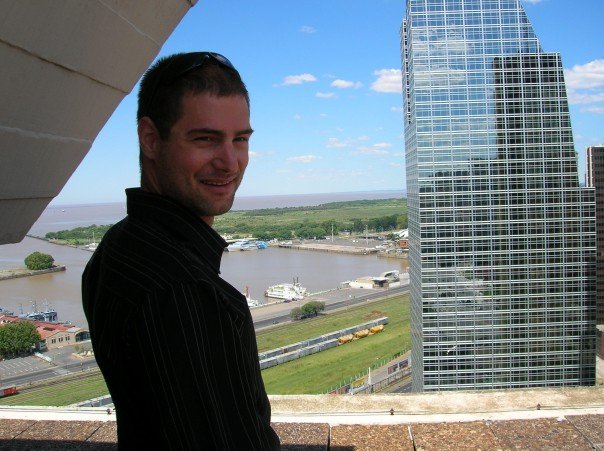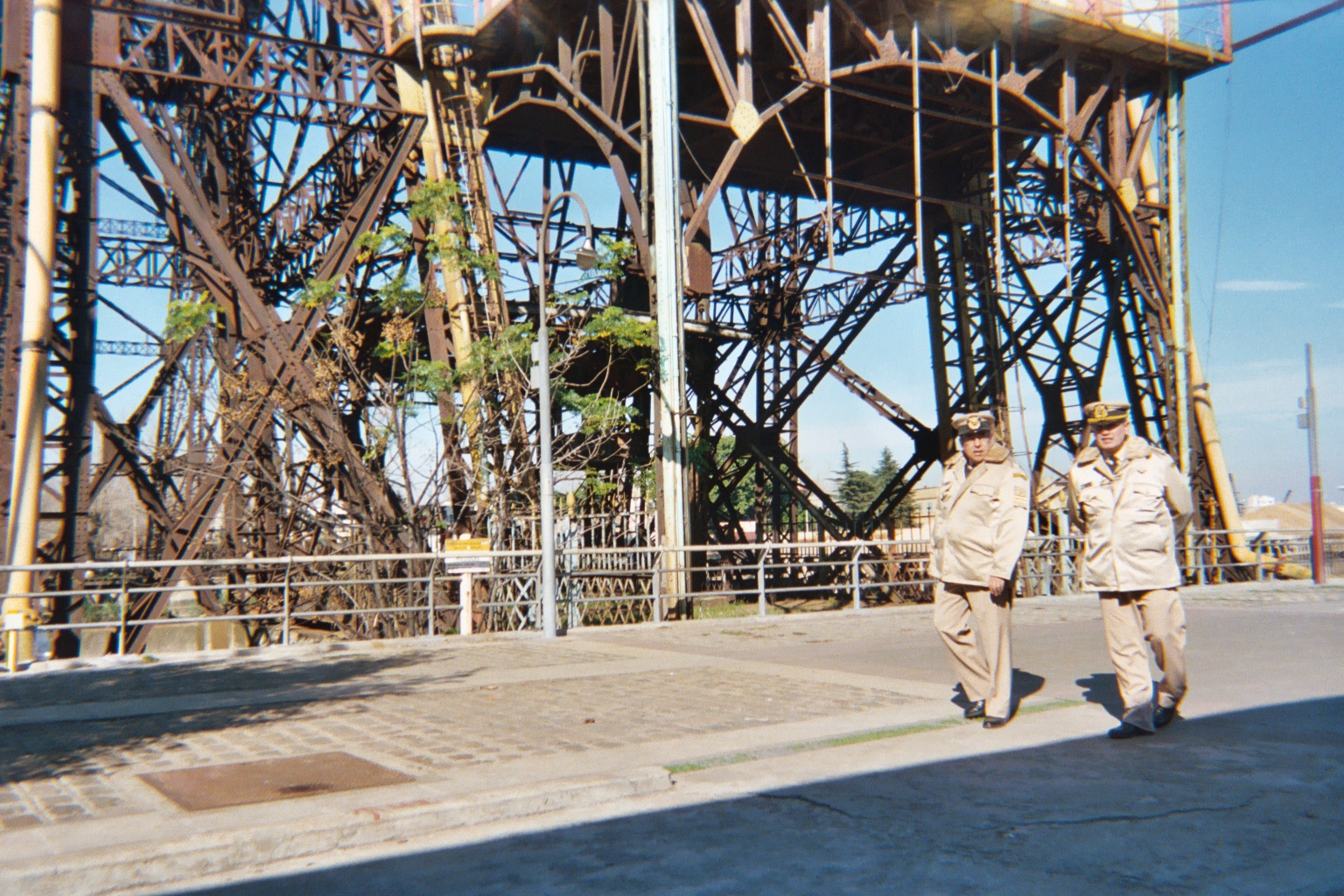 Like captain Ahab, we all have our particular White Whales we chase. Mine is an abandoned bridge in Buenos Aires. I can’t explain it. You’re either one of the small subset of people who see this and drool at the thought of climbing it, or you’re not.
Like captain Ahab, we all have our particular White Whales we chase. Mine is an abandoned bridge in Buenos Aires. I can’t explain it. You’re either one of the small subset of people who see this and drool at the thought of climbing it, or you’re not.

I first encountered the Puente Transbordador (also known as the Puente Avellaneda Antigua) during my first trip to Buenos Aires. It didn’t turn out so great. I don’t really know when I first got it in my head I had to climb this thing - maybe because it was the first interesting structure I ran into in Buenos Aires. As is evidenced from the link above, it’s in a not-so-great part of town, but that’s not why I didn’t want to go at night. I really wanted the views - the Bombanera (the Boca Junior soccer club's stadium), downtown, the port. It’s also definitely not so structurally sound anymore, but I wasn’t really worried about how to climb it or falling - I was worried about getting arrested. More specifically, I was worried about getting arrested in a foreign country.
Knowing the local culture is a big, and underrated, part of going interesting places. In Paris or New York, I wouldn’t have thought twice about climbing the thing. Not because I wouldn’t get caught, but because I would know what to do it I was. In Argentina, I had no clue. Local gossip had it that the police were all lazy and corrupt, but what that meant in practicality I didn’t know. That they’d just let me go? That I should try to bribe them? That they’d haul me down to the station and throw me in jail where I’d quickly be forgotten about? That I’d end up being hustled for thousands of dollars by various bureaucrats and officials to get out of the situation? I never felt comfortable enough doing it during my stay in 2005, but I had resolved that one day, I would. After rolling back into town I had 24 hours to figure it out before I left for Northern Argentina. And in addition to the bridge, I wanted some good views I hadn’t been able to find last time. Luckily, I met an adorable Swedish tourist, and we decided to spend some time seeing what rooftops we could get onto.
When in a strange city (or a familiar one for that matter) hotels are almost always your best bet for easily accessible rooftops. After a couple of false starts, we decided to hit the Sheraton near the Retiro train station north of downtown. In most non-English speaking countries, no matter how you’re dressed, no matter how fancy the hotel, if you walk in speaking English you’re almost always left alone. Here was no exception - we made out way out onto the roof with no problems at all.



Now, when you have a evening in Buenos Aires with the company of a lovely lady, you don’t spend it climbing abandoned bridges. We spent the night dancing the tango in San Telmo, and after my companion had left early the next morning, I resolved to give the bridge one last shot before I had to leave. Unfortunately, sometimes these adventures are anti-climactic. Stationed right out front were these guys: not even cops, but naval officers.

I had one small hope though, which was that maybe this town, like Paris, was sufficiently Latin enough to just let me do whatever I wanted. After all, this is a town where a cabby’s favorite move while stopped at a red light is to pull into the oncoming traffic lane, pull around the cars in front of him, and blow right through the light - cops around or no. I went right up to the naval officers and told them I was climbing up the bridge to take pictures. I wasn’t really surprised when, despite my self-assurance, I was met with a resounding “no you aren’t.”
I still kind of regret not just doing it. Forget about beautiful Swedes, angry naval officers, cultural uncertainly - there's a bridge to climb! Still, during moments like these - and they come for all of us - it’s always good to remember that the White Whale did end up killing Ahab.
 I also got the chance to do my first bungee jump. It was fairly sketchy - they only had velcro bands around the ankles with no other security - but the fact that it was only about 50 feet or so over a river meant that I most probably would have been perfectly fine if the velcro around my ankles gave way. It was pretty fun - you got dunked into the river at the bottom, then bounced right back out. They also had a great zip line over the river.
I also got the chance to do my first bungee jump. It was fairly sketchy - they only had velcro bands around the ankles with no other security - but the fact that it was only about 50 feet or so over a river meant that I most probably would have been perfectly fine if the velcro around my ankles gave way. It was pretty fun - you got dunked into the river at the bottom, then bounced right back out. They also had a great zip line over the river.















